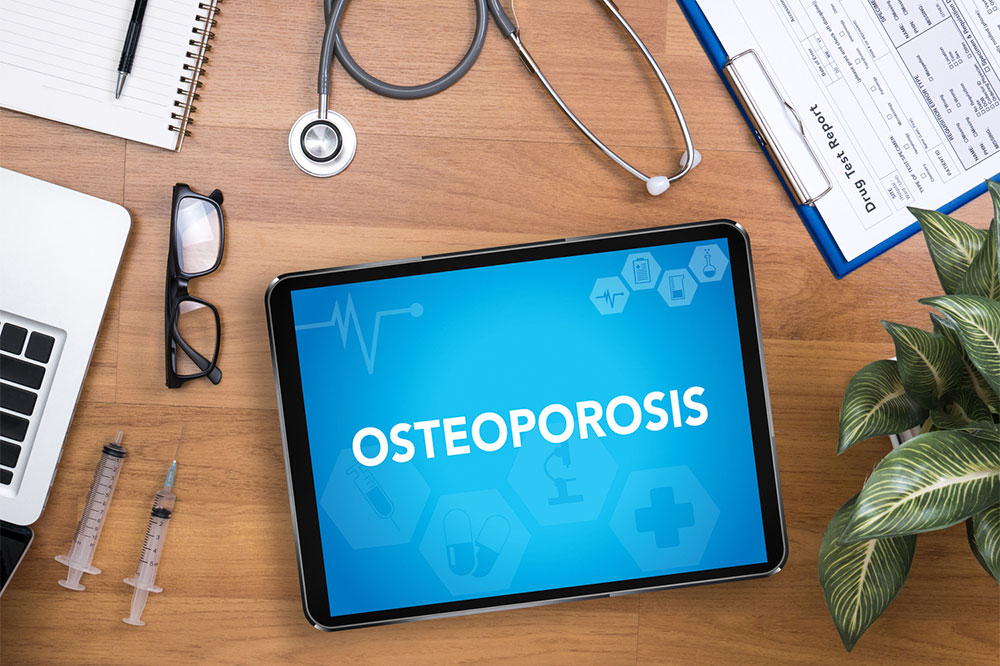
Follow these eating habits and other tips to manage osteoporosis
Osteoporosis is a health condition that weakens the bones, causing them to turn brittle and fracture. About 10 million individuals in the country suffer from osteoporosis. The deterioration of bones occurs in one of five men. In women, the probability is higher with osteoporosis affecting one in three individuals. Doctors prefer various prescription methods to cope with the condition and may also recommend some food tips. Here we have a few tips for managing osteoporosis:
Eat foods to improve bone health
One way to avoid osteoporosis is by eating foods to improve bone health. Introducing foods rich in calcium, such as cheese, yogurt, and milk, can nourish the body with calcium. The element is a vital nutrient for the formation and maintenance of the skeleton. Foods rich in vitamin C, E, K, and B also help in improving bone health. A few foods rich in these vitamins are collards, kale, spinach, arugula, swiss chard, and beet greens. Adding these edibles to meals can also introduce minerals like magnesium, selenium, and manganese to improve the quality of bones. Furthermore, eating foods abundant in omega-3, such as salmon and eggs, nourish the bones and promote rigidity. The fatty acid can also curb inflammation that may relieve any pain a person feels in their joints.
On the flip side, several foods are also bad for bones. These foods can trigger inflammation and also lead to other complications. Sodium is an element that can drastically impact bone health. A few foods rich in sodium include processed meats, deli turkey, hot dogs, and ham. The element is coupled with other nitrates and nitrites to preserve these foods and enhance their flavor. Other foods such as burgers, tacos, and pizzas also contain excessive salts. Drinking caffeinated products like energy drinks, beverages, and coffee are other unhealthy foods that can trigger osteoporosis. Caffeine prevents calcium absorption, which leads to weaker bones. Another dangerous food for people who have osteoporosis is wheat bran. It contains a high concentration of phytates known to reduce the body’s ability to absorb calcium.
There are several health factors to consider when a person alters meal plans. While they might be good for managing osteoporosis, certain foods may trigger other underlying diseases a person may have. Sometimes, one should consult a healthcare expert before making any changes to their meal plan.
Seek the right treatment
If a person has symptoms of osteoporosis, they must see a healthcare expert immediately. The expert will be able to diagnose the condition with a machine using low levels of X-rays. These rays help determine the proportion of minerals in your bones. If weak bones are diagnosed, the healthcare provider may ask the patient to begin a treatment plan. Doctors may prescribe bisphosphonates for both men and women at increased risk of fractures. They may also recommend an injection given under the skin to men and women every six months. The injectable helps increase bone density and reduce the risk of fractures. Hormone-related therapy is another treatment recommended to tackle osteoporosis.
For women, in particular, doctors may prescribe Evenity®(romosozumab-aqqg). It is an injection indicated for postmenopausal women at a higher risk of fractures. Evenity® may also be administered if the woman is unable to use other prescriptions for osteoporosis or if the earlier treatment did not have a positive effect. The treatment must be given in two separate syringes consecutively by a healthcare provider. The provider must also ensure the patient receives sufficient vitamin D and calcium during treatment.
Make appropriate lifestyle changes
Apart from eating healthy and seeking adequate treatment, it is important for a person to make appropriate lifestyle changes. Doing so can help them live healthier lives and better manage the symptoms of osteoporosis.
The first and most important way to avoid breaking bones is to prevent accidental falls. One can do this by using low-heeled shoes with nonslip soles. They must also do away with slippery surfaces at home, tangled wires, and area rugs that can increase the probability of a fall. Using brighter lights at home, installing grab rails in the bathroom, and carefully stepping out of bed are other ways to prevent such accidents.
Exercising is another way to complement bone health and prevent osteoporosis. Weight-bearing activities like brisk walking, cycling, and swimming can keep the muscles active and improve the skeletal structure. One can also work towards improving muscle balance, coordination, and strength with methods like gentle yoga, tai chi, and Pilates. High-impact exercises such as rope skipping and jumping are also known to positively influence the density of bones. However, these exercises may not be suitable if there are problems in the joints. Furthermore, one should indulge in this exercise only after consultation with a healthcare professional.
Exposing the skin to controlled amounts of sunlight can also help those affected by osteoporosis. Sunlight promotes vitamin D production, which can complement skin and bone health. Being well-versed with one’s condition is also an effort that can positively influence one’s lifestyle. Learning about causes, symptoms, risk factors, and other elements of osteoporosis will help one better understand and improve how they cope and manage the brittle bone condition.





